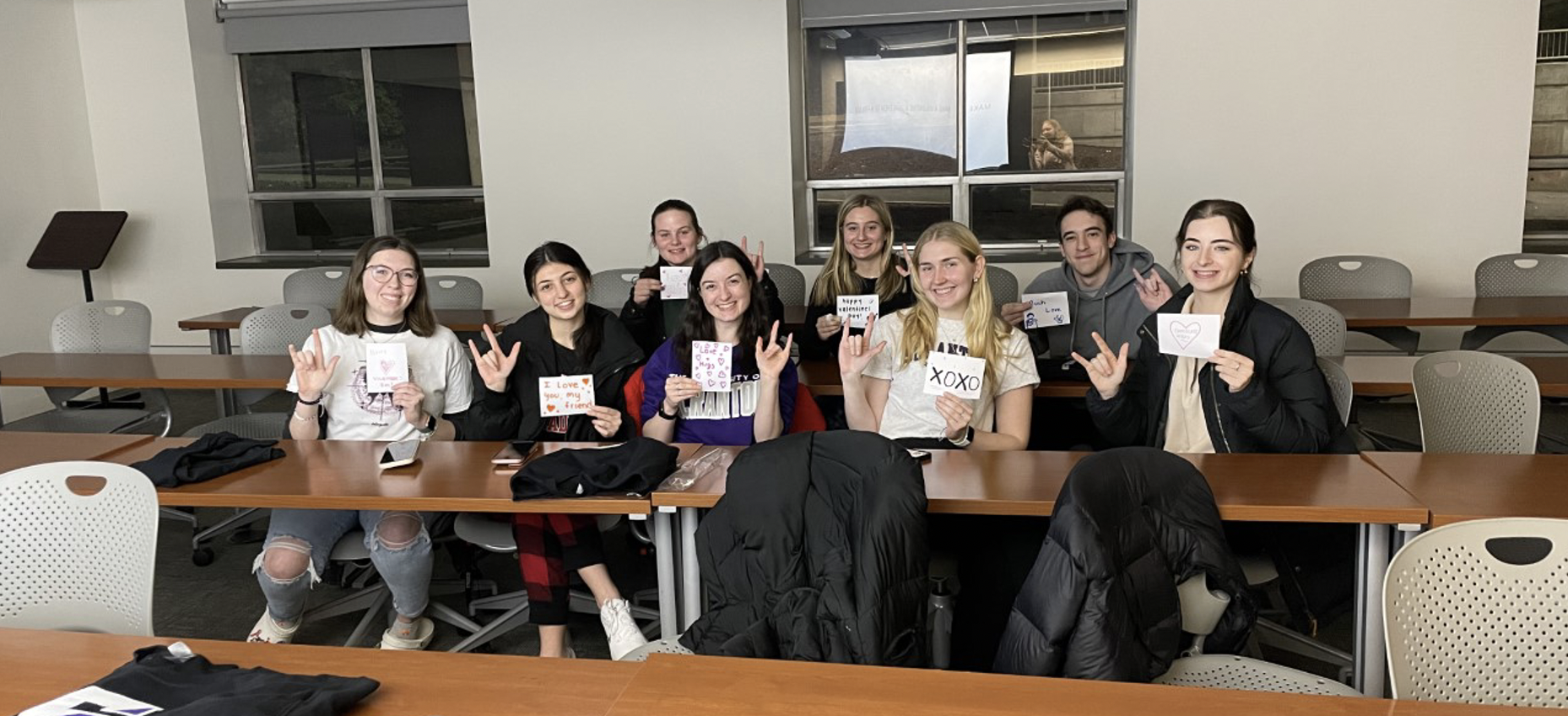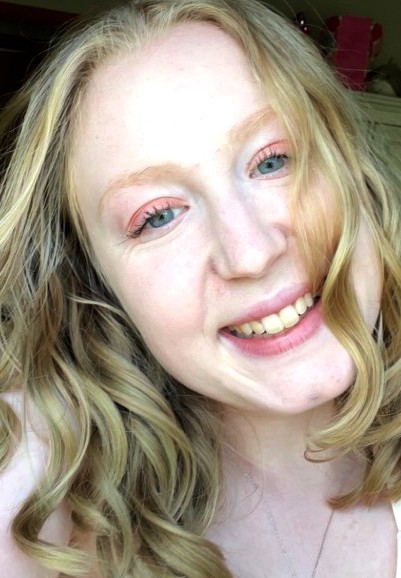Club Spotlight: Royal Signers

In an occasional series, Royal News spotlights clubs from the university’s 80+ student organizations on campus, speaks to members, and offers information on how to connect with the clubs.
To suggest suggest a club for a future Royal News article, share ideas, or to inform us of any upcoming club events, please email RoyalNews@scranton.edu or Gabriella.petti@scranton.edu
GET INVOLVED
Club: Royal Signers
Meet: Julia Higgins '23, shown below, is a senior occupational therapy major from Honesdale, Pennsylvania and president of the Royal Signers.
Connect: @scrantonroyalsigners
By: Gabriella Petti ’24, student correspondent Q: When and where do the Royal Signers meet?
Q: When and where do the Royal Signers meet?
A: "The Royal Signers meet every Monday at 8 p.m. in Loyola Science Center."
Q: Do you teach and learn sign language in the club?
A: "Yes! Each week we pick a theme and learn signs around that theme."
Q: What does a typical meeting look like?
A: "A typical meeting will start with updates and exciting news. Next, we will teach our signs for the week and do a related activity. Finally, we end our night with a Deaf culture spotlight. This is a time for us to showcase deafness in the media and current events."
Q: Why did you join the club?
A: "I joined the club because I was interested in learning more about ASL [American Sign Language] and the people in the club seemed so welcoming."
Q: How did you become interested in ASL (American Sign Language)?
A: "I went to school with a CODA (child of a Deaf adult). His mom would teach us ASL in elementary school."
Q: Why would you recommend someone to join?
A: "I would recommend that anyone who is interested in Deaf culture or ASL join the club, regardless of prior knowledge. We are very welcoming, supportive, and love to have a good time."
Q: What, in your opinion, is the most exciting activity you do as a club?
A: "I think our most exciting event that we do as a club is any of our performances. Being able to learn a song and perform it for our peers and even members of the Deaf community is a really meaningful experience!...A little note: in deaf culture there is a difference between deaf and Deaf so in this interview I am speaking about Deaf culture." *
* According to Carol Padden and Tom Humphries in "Deaf in America: Voices from a Culture (1988)" : "
We use the lowercase deaf when referring to the audiological condition of not hearing, and the uppercase Deaf when referring to a particular group of deaf people who share a language – American Sign Language (ASL) – and a culture."






